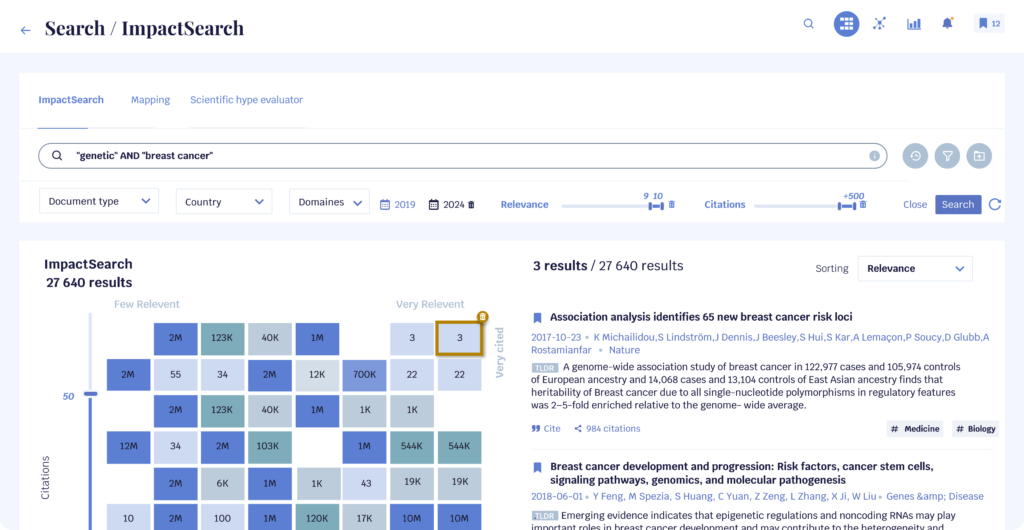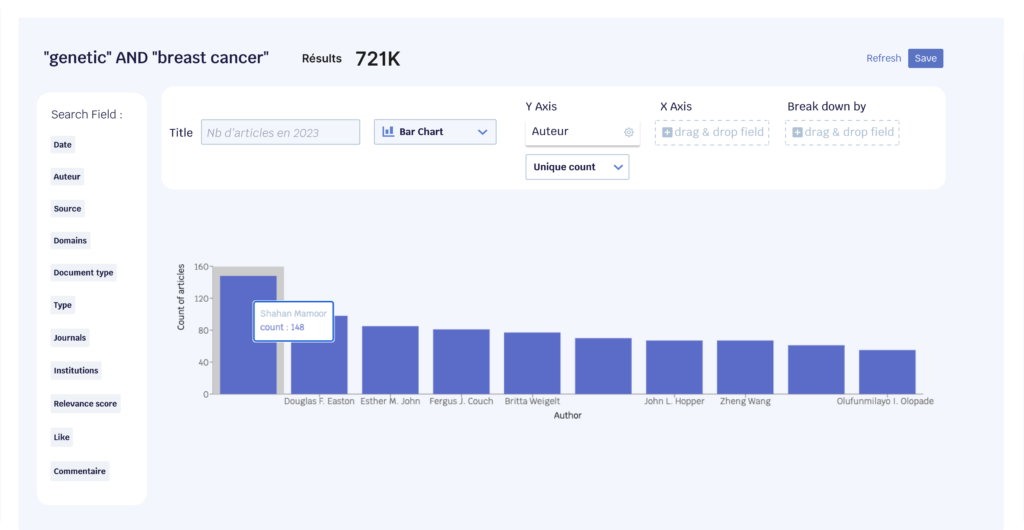The AI for scientific information management.
1. What is the importance of Scientific Information Management?
Scientific information management is based on three pillars (hover over the squares for more information)
Data Collection & Acquisition
Therefore, it is indispensable to ensure that the information sources are reliable and well-documented.
Organization & Storage
Distribution & Sharing
Knowledge sharing fosters collaboration and advances science.
2. What are the tools and technologies used for Scientific Information Management?

Bibliographic databases
These databases contain bibliographic references of scientific articles, theses, conferences, etc.
Features :
Advanced search to find relevant articles.
Filter by author, title, keywords, etc.
Access to abstracts and full texts.

Reference management tools
These tools allow for the management and organization of bibliographic references.
Features :
Reference collection and storage.
Creation of bibliographies and citations.
Synchronization between different devices.

Preprint platforms.
Preprints are indeed non-peer-reviewed versions of scientific articles.
Features :
Rapid sharing of research findings.
Feedback from the scientific community.

Data visualization tools
These tools assist in analyzing and visually presenting scientific data.
Features :
Creation of graphs, dashboards, and interactive visualizations.
Data mining.
Effective communication of results.
4. What are the best practices for Scientific Information Management?

4. How is AI used in Scientific Information Management?

Data processing

AI facilitates the extraction, transformation and structuring of scientific data from a variety of sources.

AI can automate tasks such as data classification, normalization, and deduplication.
Information search

AI-powered search engines enhance the relevance of search results.

AI also enables the exploration of bibliographic databases to find relevant articles.
Analysis of publications

AI can extract information from scientific articles, such as key concepts, research trends...

AI identifies relevant new publications.
Bibliographic reference management

AI can recommend similar articles or relevant sources.
Prediction and trend analysis

AI can anticipate emerging research areas by analyzing historical data.

It identifies trends, collaborations among researchers, and popular topics.
Personalized information

AI tailors article recommendations, conference suggestions, and journal selections based on researchers' specific interests.
4. Case Studies and Practical Applications of Scientific Information Management
A researcher working in the field of genetic breast cancer must stay updated with the latest advancements by monitoring relevant publications, conferences, patents, and scientific articles. This is where scientific information management comes into play.

Information Collection: The research team gathers relevant articles on the subject using boolean search on Opscidia’s search engine, which aggregates 180 million scientific documents from various reputable sources such as ArXiv, Crossref, Patentscope, PubMed, and more..
Filtering and Analysis: The sheer volume of available information is immense. The researcher aims to determine the extent of study on the topic, identify influential authors in the field, and pinpoint institutions conducting significant research in the area. They utilize Ecosystem Chart to gain an overview of the subject’s ecosystem.

Knowledge Synthesis: The researcher analyzes articles and analytical data to synthesize them, providing an overview of the current state of research on their subjects. This process can be time-consuming, but with Opscidia, it takes only a few seconds. They employ generative AI to synthesize multiple scientific articles swiftly.

Continuous Trend Monitoring: With information management, the researcher can monitor trends in the field. For ongoing updates, Opscidia alerts you as soon as a scientific document is published on the topic of Breast Cancer.
Informed Decision Making: The collected and analyzed information assists the researcher in making informed decisions. Whether it’s designing new experiments, writing articles, or guiding research, information management is crucial.
Learn more
Go to chapter :
